Rust is the absolute worst.
It eats away at your metal, creating pitting that is just plain ugly and will eventually cause issues with your firearm. Rust can kill accuracy and even cause breakages.
As gun owners, we own very expensive pieces of metal. Sometimes, it can feel like a constant struggle to keep the rust away.
So, let’s dive into a few ways to prevent rust and preserve your firearms as functional for as long as possible.
Table of Contents
Loading…
Why You Should Trust Us
Before becoming an NRA-certified instructor and concealed carry trainer out of Florida, I was a Marine infantryman and machine gunner. Naturally, I learned my way around guns and how to keep them in fighting shape.
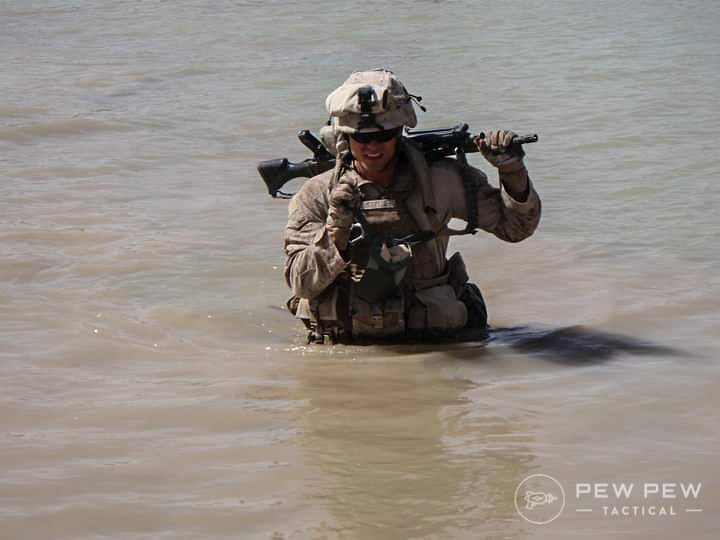
I also struggle to fight rust living in the great state of Florida. Let me tell you, as the owner of a post-2007 Freedom Group ran Remington 870, I have become a pro at rust prevention.
How to Prevent Rust
1. Use Oil
There are loads of products out there aimed at cleaning guns. Some are for bores, some for wood, some for this, and some for that.
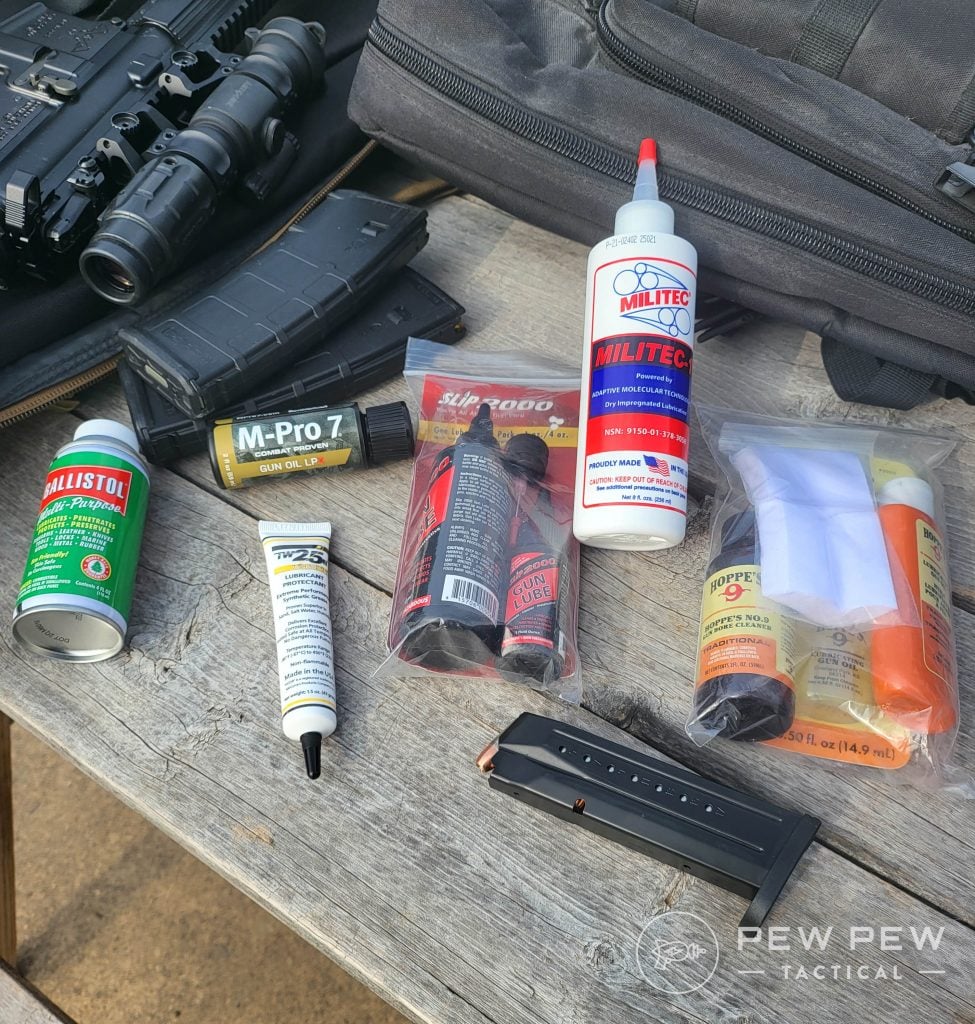
Have them all if you want, but you learn to learn the difference between a cleaning agent and a protecting agent.
Solvents are designed to clean and break off carbon, lead, and brass. They are typically not intended to be a protective layer.
This is where oil comes in. Stuff like Remoil, CLP, and Hoppes No. 9 are both cleaners and rust-preventatives.
-
25% off all OAKLEY products - OAKLEY25
Copied! Visit Merchant
CLP stands for Clean, Lubricate, and Protect. Most oils like these will work well for cleaning and protecting guns.
Solvents can still be handy, especially for brass and lead removal. However, if you only plan to use one type of cleaner, make it a multipurpose oil. When cleaning a firearm, you should leave just a light layer of oil on the gun to prevent rust in between shootings and cleanings.
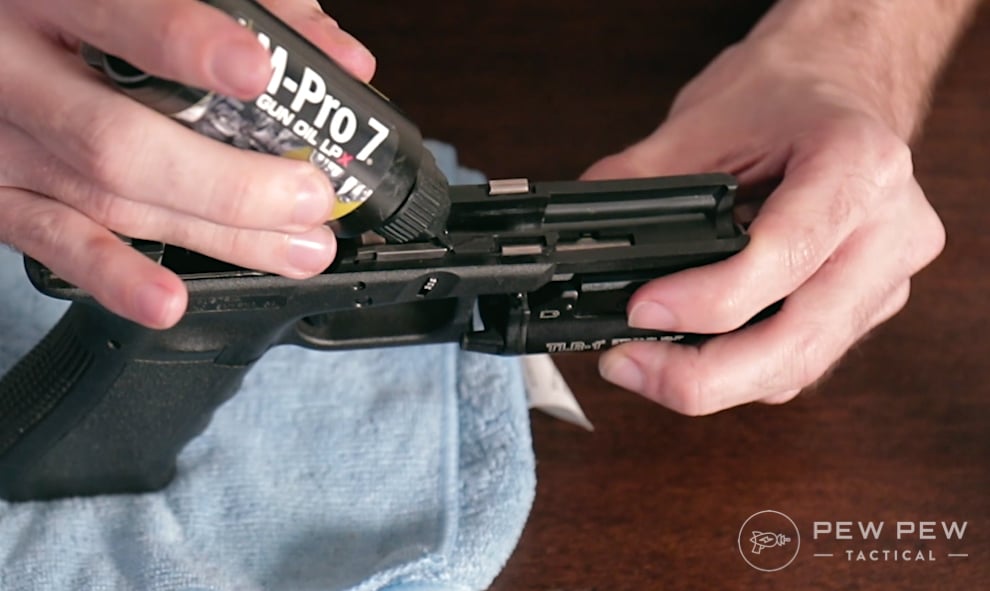
This is the simplest but also one of the best steps to prevent rust and keep your firearm running smoothly.
2. Never Put It Away Wet
I mean that literally but also figuratively. If your gun gets wet due to external exposure, you should dry it off immediately.

Say it starts raining when you are out shooting or hunting. Your gun isn’t going to melt, but you should dry and lubricate the weapon before storing it for the day.
If you are hunting duck in a salty marsh, you might want to wipe it down before you toss it in the truck and head home. Salt does a number on guns; as a coastal resident, I can attest that it destroys fast.
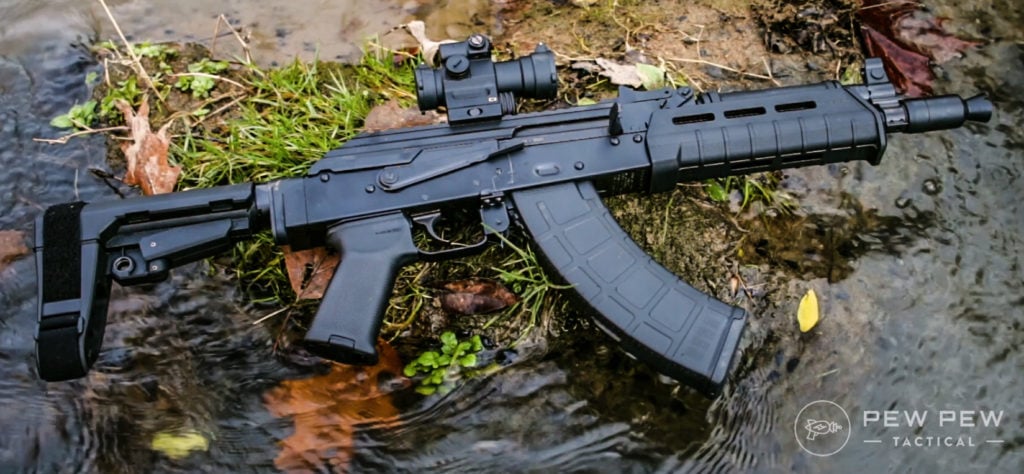
You want to dry the gun and then apply a layer of oil at a minimum.
You’d be surprised by how fast rust can accumulate on a firearm. A friend left a Model 36 on their boat, took it fishing once, and the gun never got wet. However, after a week, the gun was a rust bucket that took several hours to clean.
I don’t typically clean my guns every time I shoot them, but I will do so after any exposure to water. I also ensure they are cleaned inside and out. A little rust on my 590 barrel might not be a big issue, but rust on small metal parts is an absolute pain.
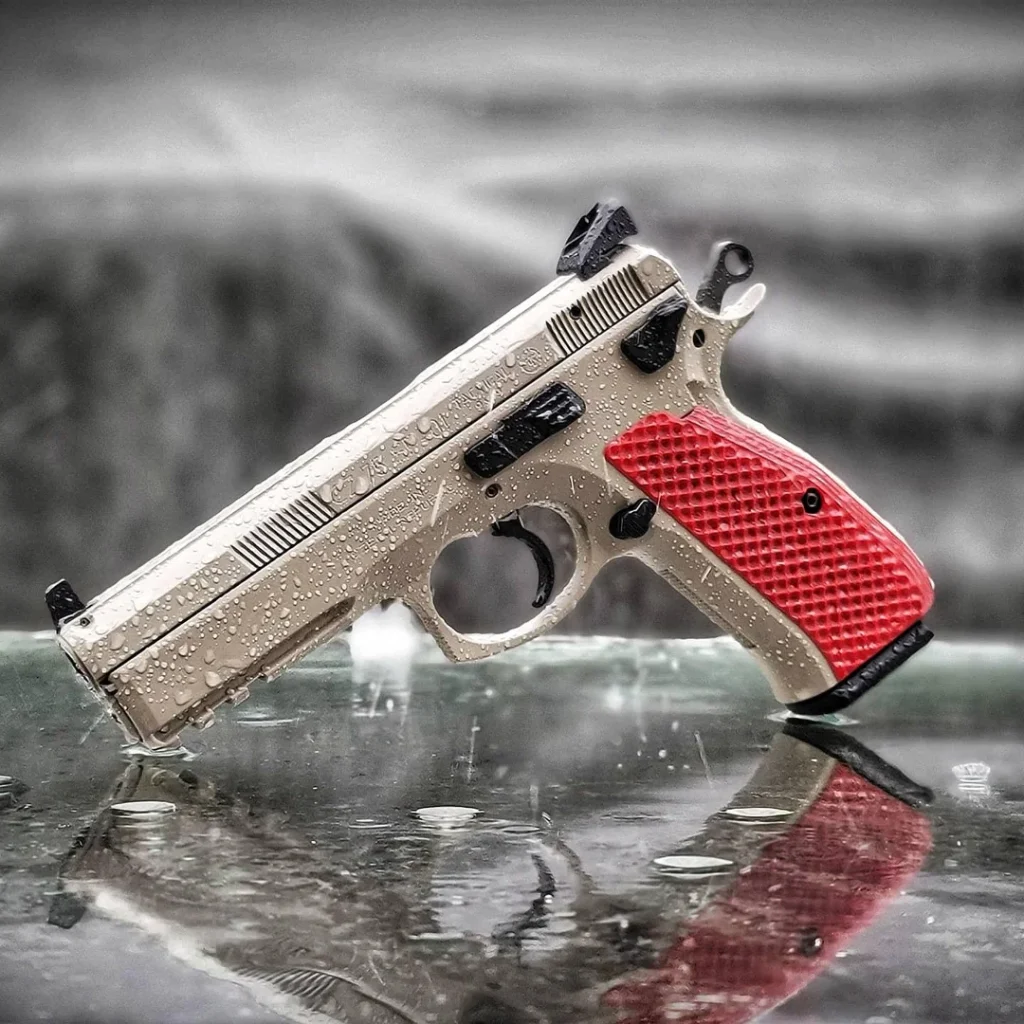
Thinner parts that often make up the internals of a gun are more susceptible to rust damage. Make sure those parts are dried, cleaned, and lubricated after exposure to water. Trust me, trying to remove rusted-in grip screws is no fun.
3. Take the Environment Into Account
Beyond just keeping the gun dry, you must also take the environment into account. A guy in Arizona isn’t going to face the humidity that I deal with in Florida.
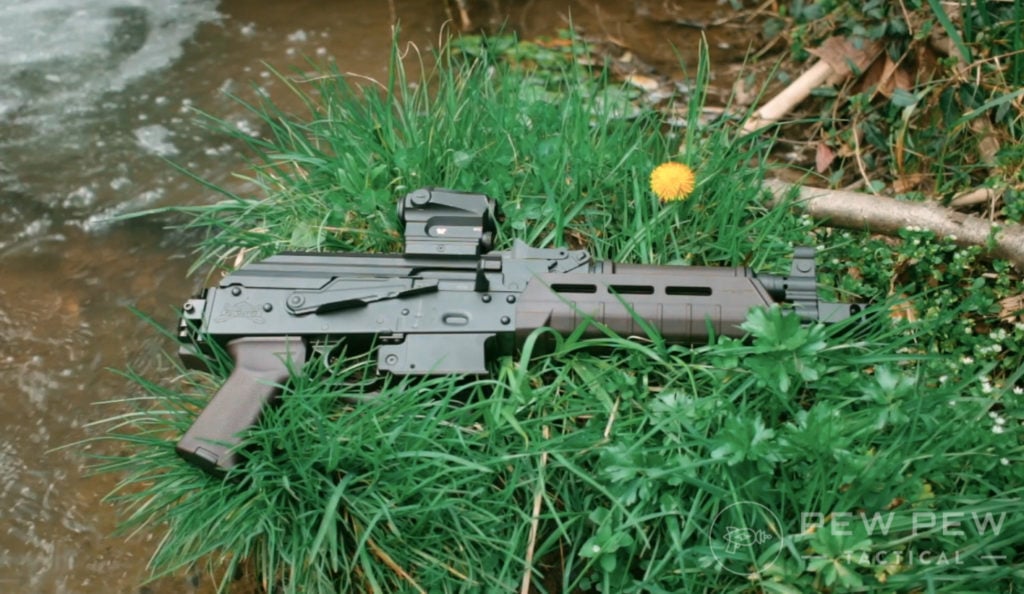
When I go hunting on a muggy Florida October afternoon, I’m dealing with some serious humidity, and I live on a coast, so my gun can rust if I look at it wrong.
It’s not like the gun is getting rained on, but the ambient conditions of the environment can be hazardous.
That humid morning makes me sweat, and that salty sweat can cause rust. Anyone who carries IWB will understand that firearms risk exposure to sweat.
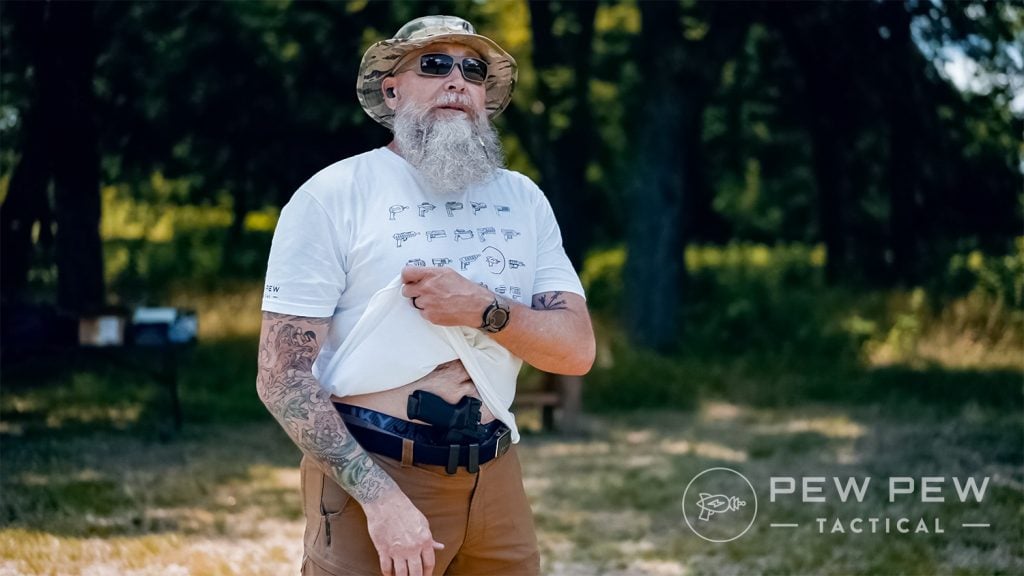
Even though it didn’t rain, and you didn’t take your gun swimming, you still need to at least wipe the gun down and ensure it remains oiled. I always remove my gun from its holster and rub a rag over the holster if it’s been an active day.
Modern Kydex won’t absorb or hold sweat, so that’s easy, but if you are using leather, it might need to sit out and dry if you’ve been rocking and rolling in 90-degree temps while huffing through 75% humidity.
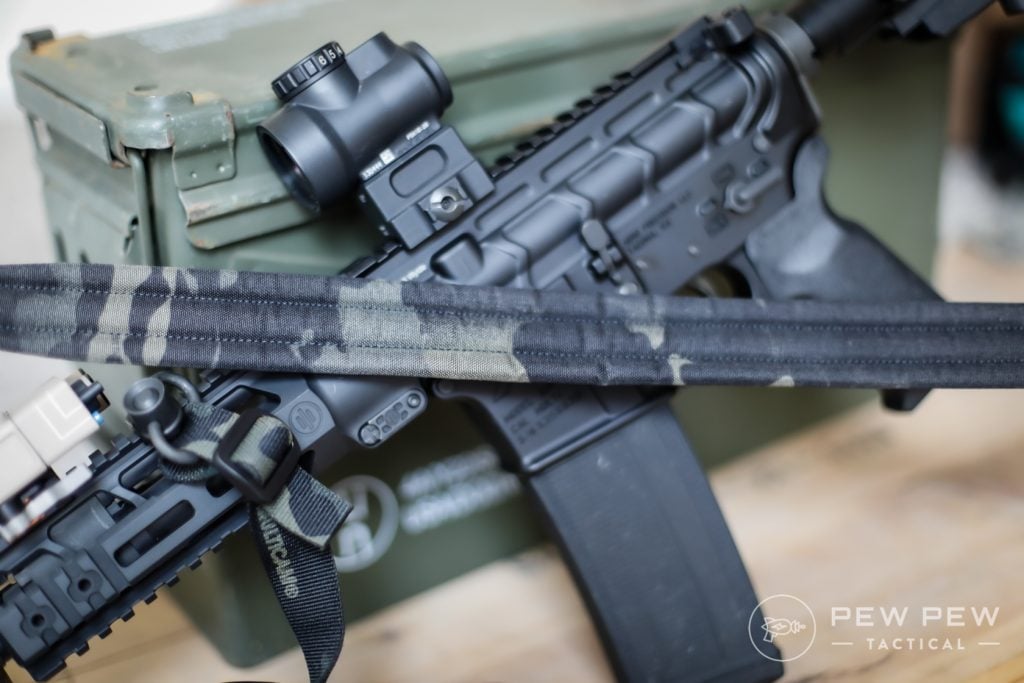
The same could be said for slings. Do you want leather or nylon-type materials absorbing sweat all day and then sitting against your gun in a cramped safe or gun case? Remember to remove them and leave them out to dry.
4. Examine Your Storage Solution
How are you storing your guns? For many of us, it’s a gun safe. Some may prefer locked cases, and others may display their firearms.
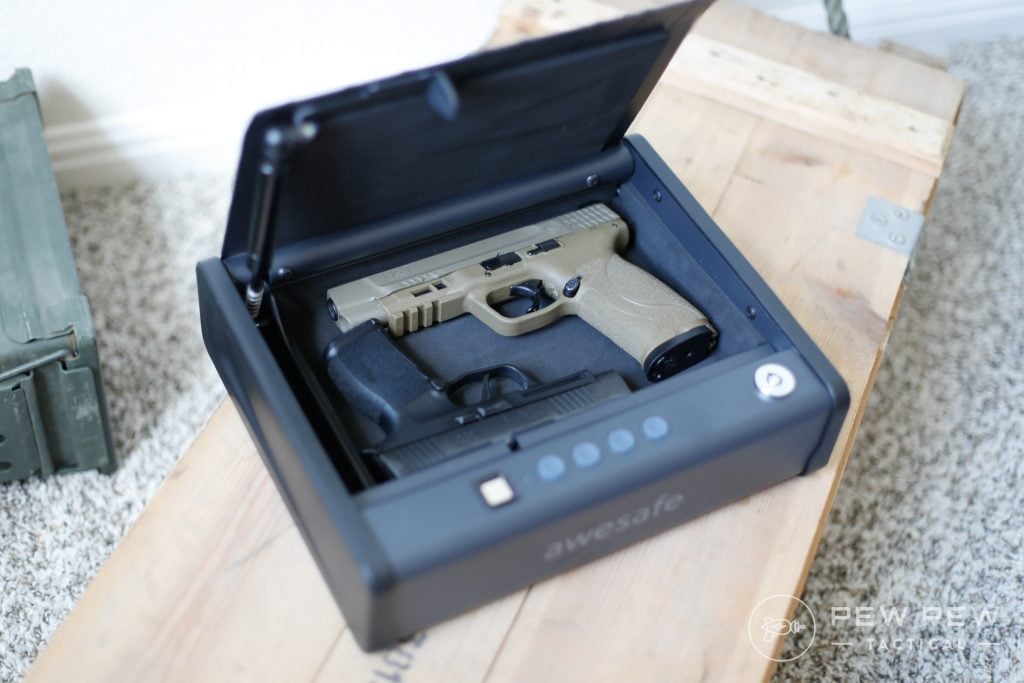
Regardless of what and how, you should examine your method of storage in relation to rust prevention.
Any enclosed container is a great place for moisture to gather with limited or no means of escape. Humidity infiltrates these containers and douses your firearm in a fine layer of moisture that encourages rust.
The easiest method to combat this is something called a desiccant. Do you know those tiny packets that come with shoes advising you not to eat them? That is a desiccant pack.
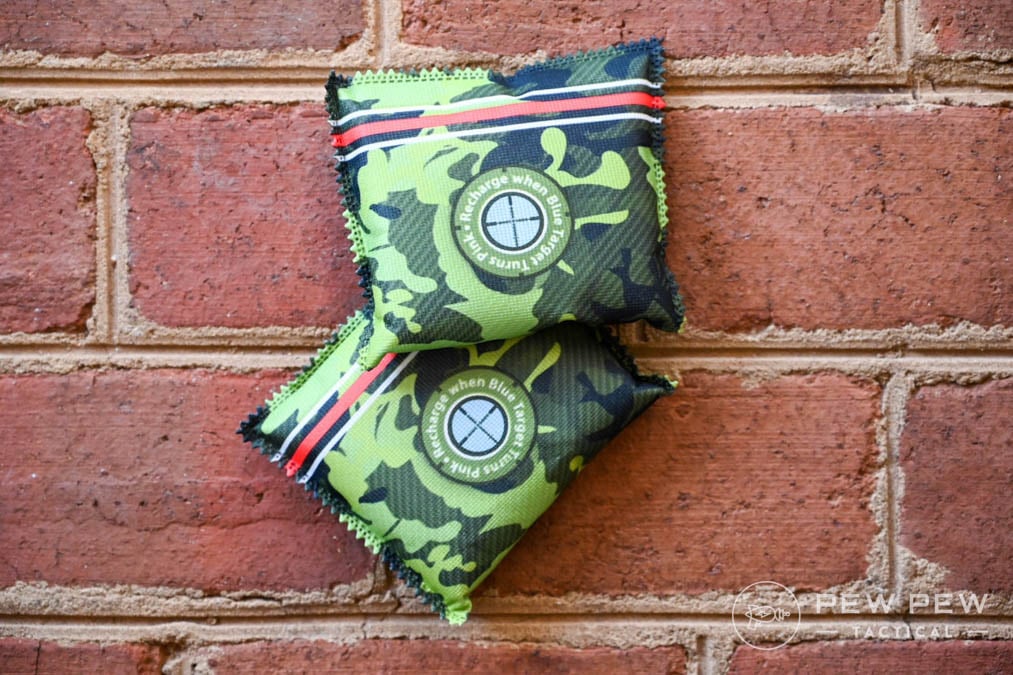
These packs absorb humidity in the air. You can order larger packs and toss them into your safe or case to absorb moisture. However, they do not last forever and must be replaced over time.
I toss rechargeable desiccant packs in my safe. The ones from Zarpax can dehumidify up to 200 gallons, so one per safe is more than enough.
A handy blue dot in the center turns pink when it’s time to charge the pack. Recharging is just microwaving at a particular power level for a few minutes. Simple and easy.
-
25% off all OAKLEY products - OAKLEY25
Copied! Visit Merchant
There are other great options, too — Hornady makes all manner of desiccant options, from silica gel backs to mounted canisters.
Hornady makes a couple of safe dehumidifiers. Their simple 12-inch rod model is the easiest and stays out of the way, but it does require access to an outlet.
Another way to help prevent moisture is proper safe placement. Put it against an interior wall rather than an exterior wall. Exterior walls insulate and are more subject to temperature changes.
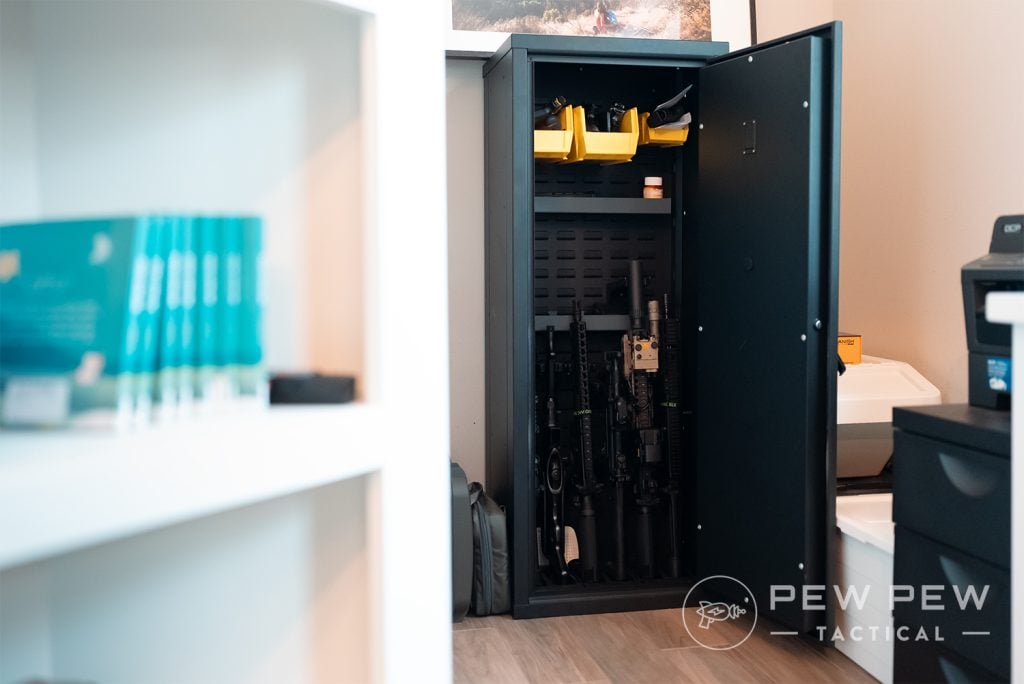
Avoid placing the safe or case under an AC vent. Rooms like bathrooms also tend to be a poor place to store guns due to moisture.
5. Avoid or Recognize Corrosive Ammo
I’m willing to bet that more Mosin-Nagant rifles were lost to corrosive ammo use in the United States than were lost in the battle of Stalingrad.
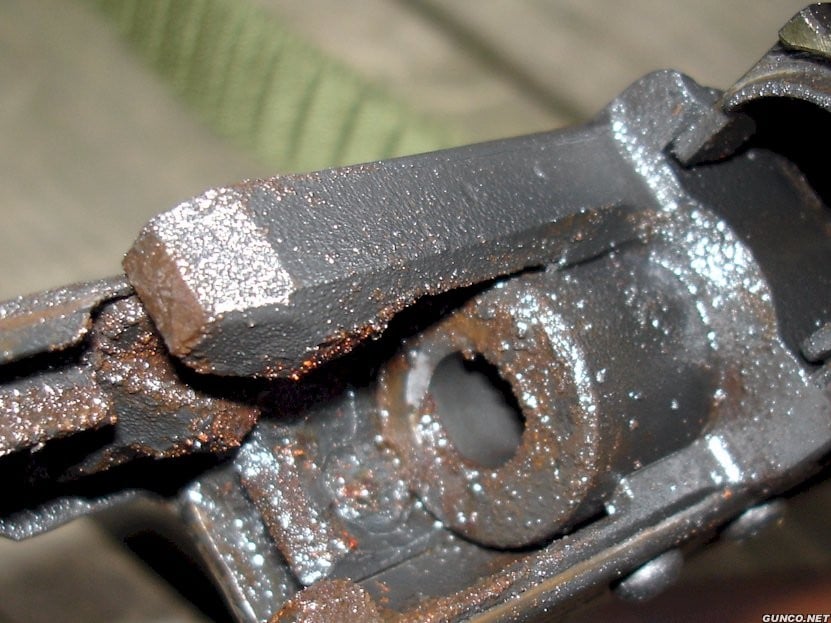
The first rifle I ever purchased was Mosin for $89 on my 18th birthday. Alongside it, I bought a spam can of that old Russian ammo for about $40.
I shot the hell out of that Mosin and had no idea that my ammo was corrosive. I didn’t even know corrosive ammo was a thing. It wasn’t until rust came out of the bore that I knew I had a problem.
I scrubbed and scrubbed and luckily saved that Mosin-Nagant. However, if I had never noticed it, the gun would have eventually become a smooth bore.
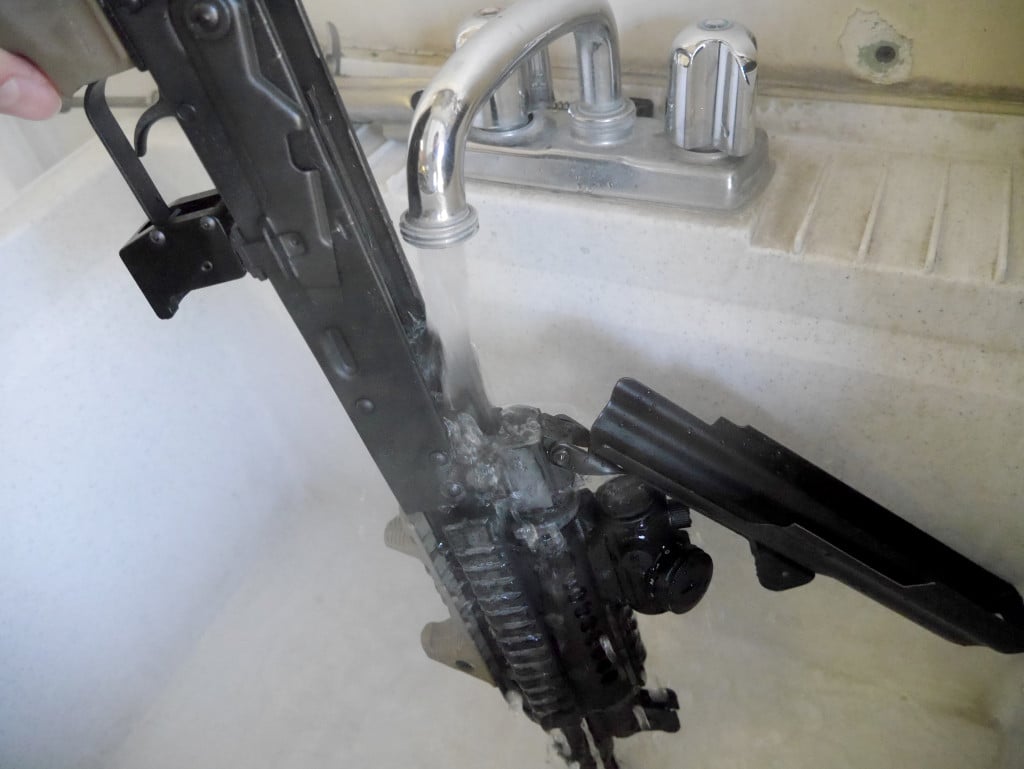
Corrosive ammo isn’t all that common these days, and modern production ammo is all non-corrosive. However, some surplus ammo can be corrosive, although it typically has warnings informing you.
It’s corrosive salts in the ammo that cause this corrosion and rust. Immediately after you are done shooting with corrosive ammo, you need to clean that bore and bolt.
Simple Green, or Windex in particular, tends to work well in displacing and removing those salts. Coat a bore patch with Windex and shove it down the barrel. Heck, squirt a little down the bore and punch it.
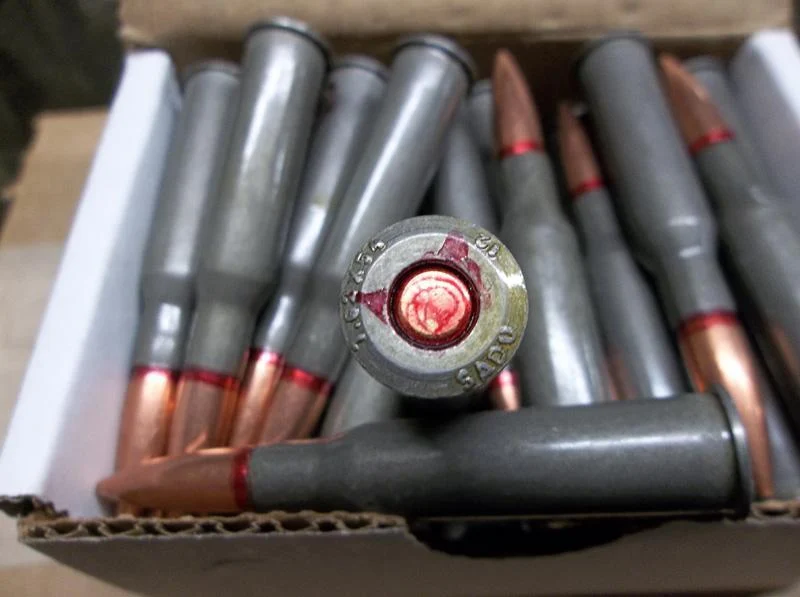
Do it over and over until crap stops coming out. Then, follow that up with bore solvent and some CLP or other protective oil. Make sure you clean the entire interior of the gun. Those corrosive salts can get everywhere.
You can also check out our full guide on how to clean corrosive ammo.
6. Take Travel Precautions
Travel can be a sneaky time during which rust can accumulate.
Airport luggage compartments face some crazy temperature changes, which can mean humidity buildup. The same goes for the bed of a truck.
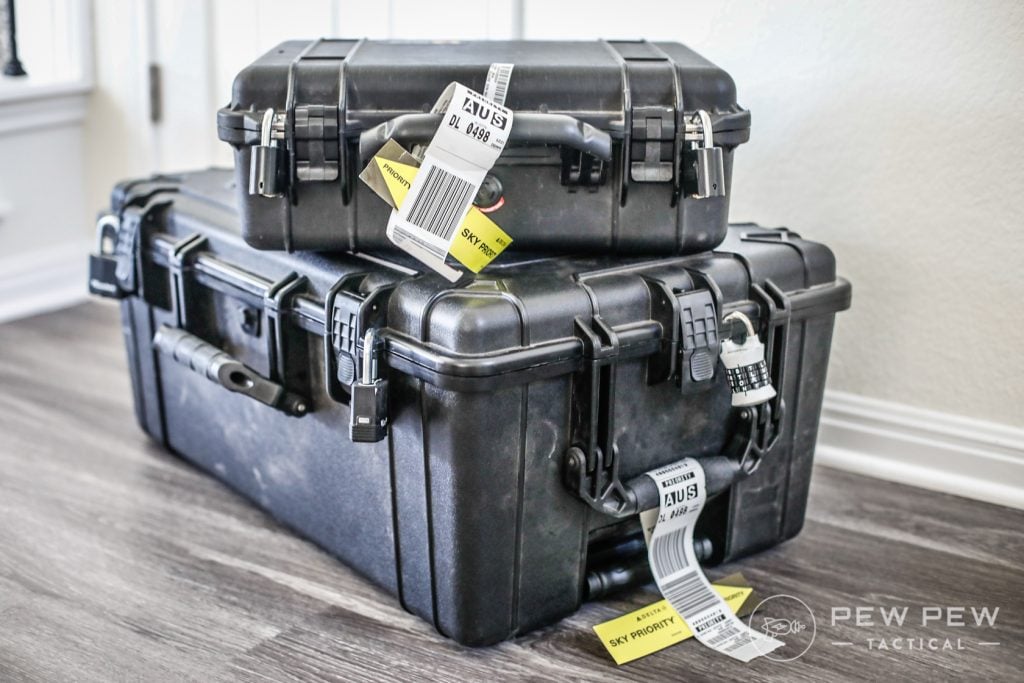
This means you have to take pre-travel precautions.
Add portable desiccant packs and oil the gun prior to traveling. There are even specialized gun socks that prevent rust. Several companies produce gun socks that are silicone-treated to inhibit rust.
-
25% off all OAKLEY products - OAKLEY25
Copied! Visit Merchant
Final Thoughts
Rust is a real pain. I used to avoid judging the finish of a firearm harshly, but after seeing how easily some can rust, I give criticism where warranted.
The good news is most companies use pretty darn good finishes. While rust is becoming less and less of an issue, Mother Nature still remains undefeated.
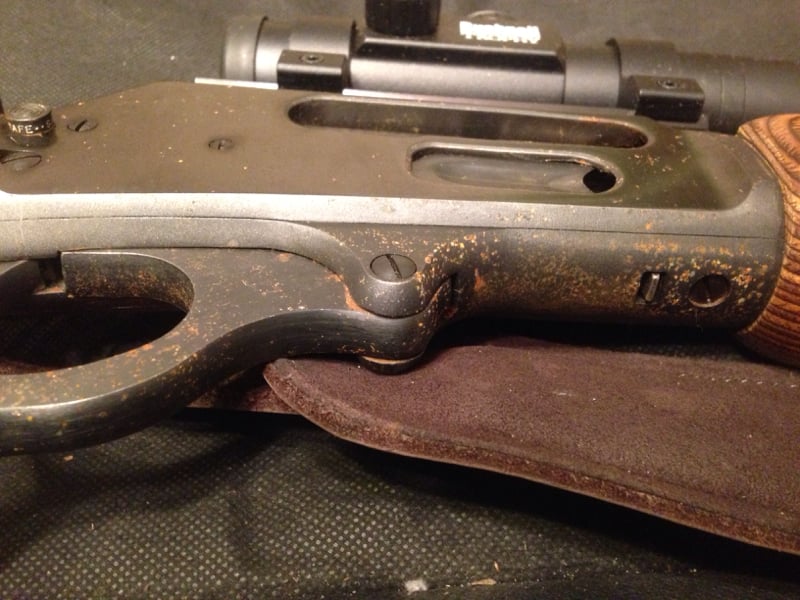
These are my personal steps on how I fight rust. Do you have any tips or tricks on keeping your guns rust-free? Let us know in the comments below! Be sure to also check out our article on the 6 Best Gun Cleaning Kits of 2023!


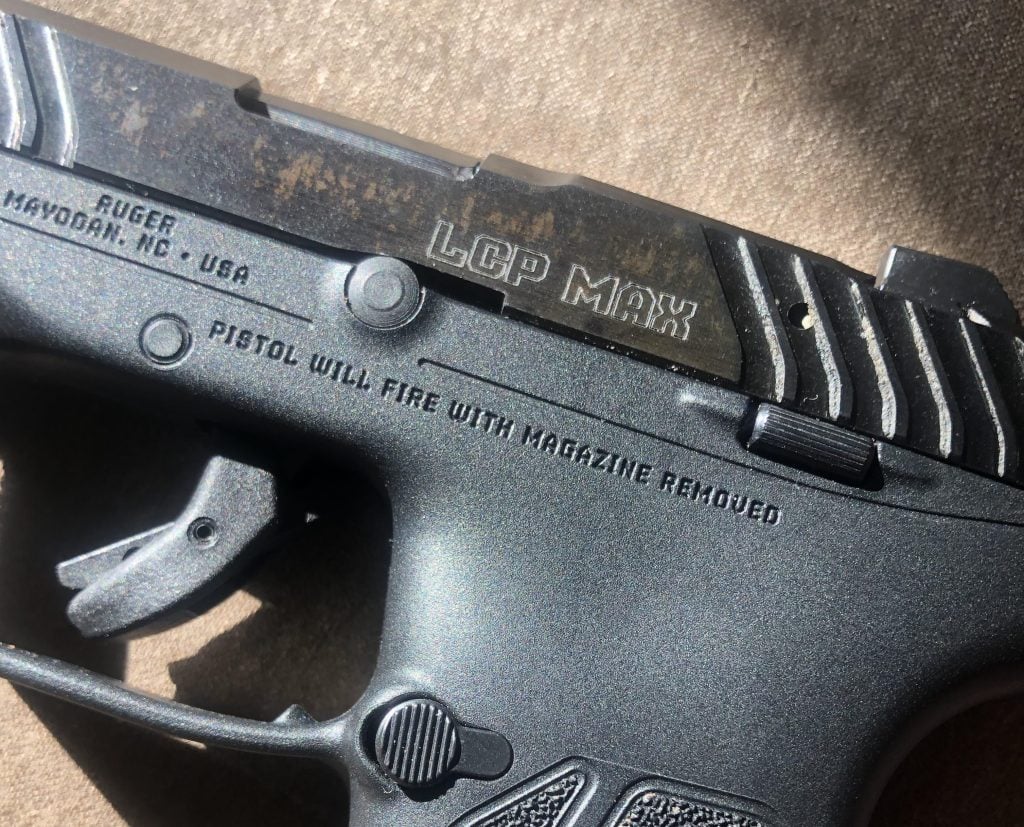










7 Leave a Reply
Many of these methods provide great proven results however, they are not nearly as fail safe or convenient as VCI (vapor corrosion inhibitor) products/packaging. VCI gun bags are great because they help create a microenvironment around the gun full of anti-corrosion chemistry that blocks oxygen molecules and moisture vapor from reaching the external AND internal metal surfaces. Plus, VCI molecules do not leave any messy residues behind. Another advantage of VCI products is that, unlike a dehumidifier, the VCI bags will continue preventing rust if the power goes out.
Cerakote is also another route, that one can take. Completely impervious to chemicals (except hydrochloric acid), and has the highest corrosion resistance, of any product on the market.
An ounce of prevention > a pound of cure, as they say; but still, maybe a follow-up post on what to do if you do find rust?
Hornady OneShot lube is a wonderful rust prevention though it is not sold for that. It does not smell or get sticky something like T9 or CorrosionX
For something like a blued LCP in the photo, would spray painting the slide help prevent rusting better than oil?
With centuries of arms rusting away, we have seen some improvements, and it would seem we are on the cusp of manufacturing them with an actual warranty against corrosion.
Well, one can hope.
Having gone thru this same learning curve, a good oil and a dehumidifier stick goes a long way, along with simply being diligent.
Nice